As the topic shows, we ıntend to talk about types of ventilation. But first, think about these questions. Can you imagine a world with no fresh air? What would happen if you had to breathe in an atmosphere full of contaminated air? So frustrating! No doubt it would be impossible! In fact, living creatures can’t stand these conditions.
A human being consumes more than 12,000 liters air for breathing every day. And what is the role of ventilation in it? In a world where we pass more than 90% of our time ın closed buildings, the importance of ventilation is more pronounced.
But the first question is that what the ventilation is? How can we understand that the ventilation is working correctly? If not, how can we improve it? What are the types of ventilation in a building?
Whatever the application or requirement, you will find all the information about the ventilation equipment you need at Linquip. We are here to answer all your ventilation-related questions at Linquip. For more information about ventilation, visit Linquip and explore the article “What Is Ventilation?”.
Are you in need of a ventilation device and equipment? Here at Linquip, you have a wide range to see Ventilation Products for free. What ventilation equipment are you looking to buy? Linquip provides no-cost access to all available Ventilation Devices for Sale. Linquip also offers you the opportunity to send inquiries to all Ventilation Suppliers and Companies and receive quotations for free if you are looking for ventilation equipment or device prices.
Let’s take a look at the following concepts.
⇒ View a List of Ventilation for Sale and Their Suppliers ⇐
Ventilation
Ventilation acts like the lungs of the building. It is the process of moving outdoor air into the building or a room and distributing it in the area. The fresh air will dilute the inside polluted air, and also it will be replaced by some of the contaminated air. The primary purpose of ventilation is to prepare healthy air for the breathing of people in that place.
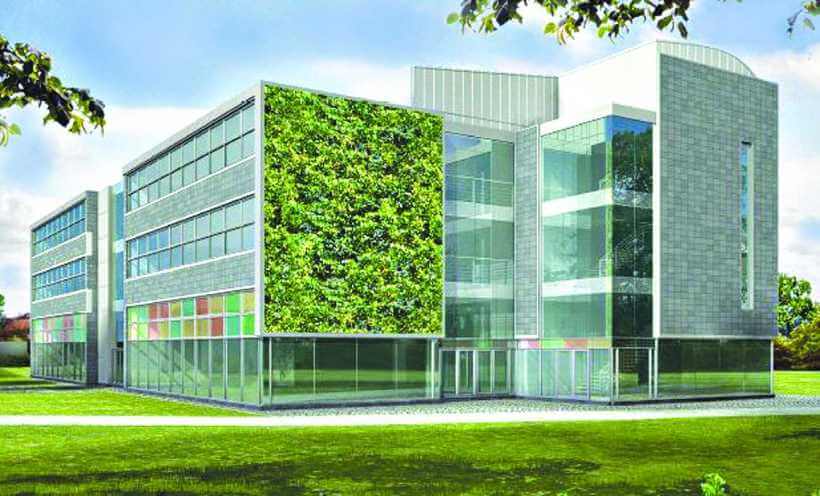
Each building ventilation system has three fundamental elements:
Ventilation rate: The amount of outside air supplied into space and the outside air quality.
The ventilation rate is related to the quality and the amount of external air-ventilated in a particular space. Buildings must follow ventilation standards, which are usually different for residential and commercial buildings. The usual units employed in conveying the ventilation rate are cubic feet per minute (CFM), liters per second (L/s), and cubic meters per hour (m3/h). Each liter per second equals 3.6 cubic meters per hour. Also, each CFM is around 1.7 m3/hr. We can use these units interchangeably.
Airflow direction: The whole airflow direction.
As its name implies, the airflow direction is where the ventilated air moves inside the room. In a perfect world, it should transfer from a clean area to a polluted one.
Airflow pattern: Airflow pattern or air distribution.
It indicates that air should be circled in a way that it is delivered to each zone efficiently, and also the generated pollutants in the space should be sent away successfully.
To put these elements in mind, we can assess the performance of a ventilation system in four aspects:
- Does it pass the standards dealing with the ventilation rate? Or in other words, does it have enough ventilation rate?
- Is the flow direction from a clean zone to a dirty one?
- Does the fresh air arrive in all parts of the building and the room?
- Does the ventilation system send out the polluted air entirely from all parts of the room?
There are also other indices that help to evaluate system performance. We will talk about them further. But first, let’s take a look at types of ventilation systems.
Five Types of Ventilation
5 Types of Ventilation include:
- Natural Ventilation
- Mechanical Ventilation
- Hybrid Ventilation
- Spot Ventilation
- Task Ambient Conditioning (TAC)
Ventilation can generally be categorized into five types: Natural, Mechanical, Hybrid, Spot, and Task-Ambient Conditioning (TAC).
No matter the usage of your building or where it is located, you should consider one of these five types of ventilation systems in your building.
Read more about Dust Extraction
Natural Ventilation
Natural or traditional ventilation systems depend on natural forces such as wind and thermal buoyancy to drive outdoor air throughout the building’s openings. Three factors play roles for natural ventilation to work. These factors are climate, human behavior, and building design.
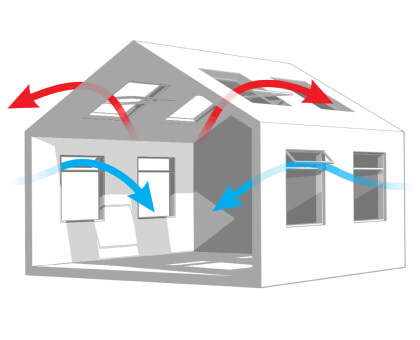
During the design of a building, the designer should provide some purpose-built openings such as doors, windows, solar chimneys, wind towers, and so forth. If these openings work correctly, a natural ventilation system helps to reduce energy consumption by up to 20 to 25 percent.
When we talk about natural ventilation, one may think of simply opening the windows of the room. Nevertheless, it is more complicated than it seems. In some particular locations whose outside contamination is more than that of the inside, natural ventilation may work conversely. It will not only ventilate the air inside the room but also will pollute it. The polluted air can enter the building through openings and put our health at risk. Due to the fact that there is no considerable control while using natural ventilation, it is being replaced by mechanical ones in most cases.
By the way, you can find different types of natural ventilation systems.
Buoyancy-Driven:
It is also known as stack ventilation. Since the temperature between the indoor and outdoor air are different, the air arises upward. As we know, the temperature difference results in different densities. The warmer the air, the lower density it has, and its buoyancy is more, compared to the cooler one, so it arises.
There are openings in a building near the roof and the floor. If the indoor air has a higher temperature than the outside air, the indoor air, which is warmer, rises and exits from higher opening. The colder air outside the building enters through the lower opening. Eventually, we have ventilated air.
Wind-Driven:
Wind-driven ventilation is so more straightforward. It is also referred to as unilateral ventilation and cross ventilation. This type of ventilation is based on the wind’s manner and its interaction with chimneys, windows, or other openings in the building.
People often have misconceptions about wind-driven ventilation. They imagine that opening windows solves the problem of ventilation. Even if the luck is with you to get the right wind speed outside, air conditioning can dramatically boost energy costs.
Mechanical Ventilation
Mechanical fans conduct mechanical ventilation. Fans can be installed in windows or walls directly or in air ducts to supply air to or from the room.
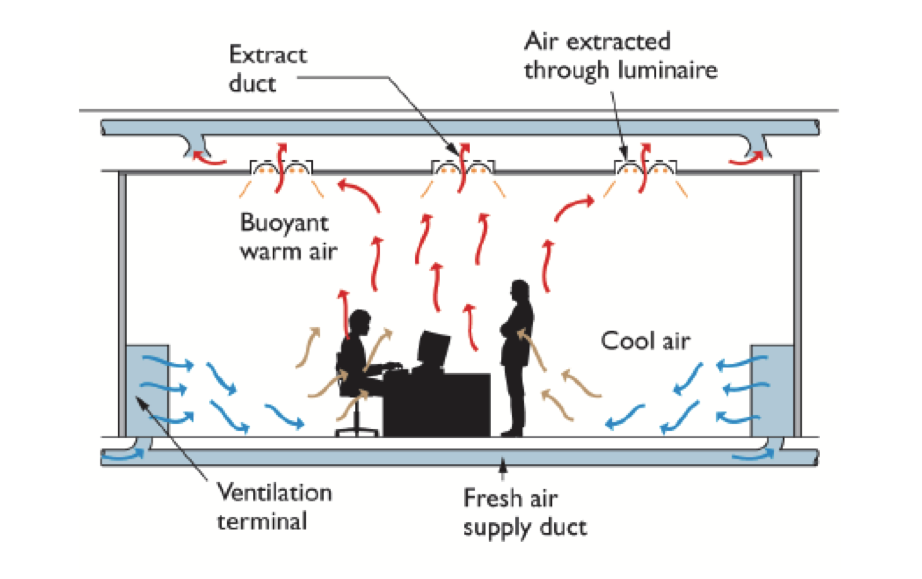
The type of mechanical ventilation used depends on the weather. For example, in hot and humid climates, it may be necessary to minimize or prevent intrusion rather than interstitial compaction (which, when hot and humid air penetrates a wall, ceiling, or floor from inside a building with a cold surface Encounters) prevent. In these cases, a positive pressure mechanical ventilation system is often used. Conversely, in cold climates, exfiltration should be avoided, and negative pressure ventilation should be used to prevent intermediate condensation. A negative pressure system is often used for a room with locally produced pollutants, such as a bathroom, toilet, or kitchen.
In a positive pressure system, the room is under positive pressure, and the room air leaks out through a leak in the envelope or other openings. In a negative pressure system, the place is in negative pressure, and the room air is compensated by “sucking” the outside air.
A balanced mechanical ventilation system is a system in which air sources and exhausts are tested and adjusted to conform to design specifications. Room pressure may be maintained at slightly positive or negative pressure, which is achieved using an unequal amount of supply or exhaust ventilation rate. For example, a slight negative room pressure is minimized by evacuating 10% more air than the supply in cold weather to minimize the possibility of intermediate condensation. In the air warning room to control infection, a minimum negative pressure of 2.5 Pa is often maintained relative to the corridor
Types of Mechanical Ventilation Systems
One of the types of ventilation is mechanical ventilation, which is classified if four types. Types of mechanical ventilation systems are described below:
Exhaust-Only Ventilation
In these types of ventilation, exhaust ventilation is a subset of mechanical ventilation. These systems work by reducing the pressure inside the building. It often does not have any special component to pull outside air into the room. The fresh air enters the building through leaks in a building’s structure and balances the pressure.
Exhaust ventilation systems are relatively uncomplicated and economical to install. Typically, an exhaust ventilation system contains a single fan connected to a centrally located home exhaust point. So, it has low operating costs as well.
Exhaust-only systems are suitable for colder places rather than warmer locations; since, in warmer zones, the moisture may cause difficulties during the pressure reduction.
Supply-Only Ventilation
In these types of ventilation, exhaust ventilation is a subset of mechanical ventilation. The supply ventilation system employs a fan to pressurize the room air and force the outdoor airflow inside. The inside air escapes outside through wall leaks and exhaust fan ducts. A typical supply ventilation system contains a fan and duct system that helps fresh air comes into the building. Sometimes they have a Central Fan Integrated (CFI) system. In this condition, installation and operating costs may increase.
Supply ventilation systems have more control over the air that enters the house than exhaust ventilation systems. By pressurizing the house, supply ventilation systems minimize outdoor pollutants in the living space.
Balanced Ventilation
If exhaust-only and supply-only systems combine, the balanced system comes into existence. In this system, the airflow rate of indoor exhaust and outdoor supply is roughly equal. In some cases balanced system employs Energy Recovery Ventilator (ERV) as well as a Heat Recovery Ventilator (HRV). Balanced ventilation is another subset of types of ventilation.
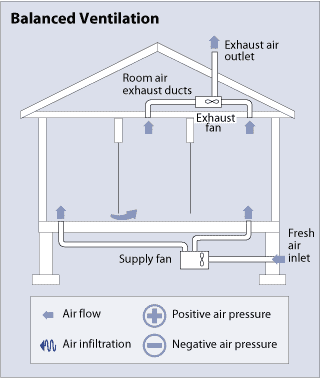
Energy-Recovery
When we talk about types of ventilation, we should consider energy recovery, as well. Energy recovery ventilation prepares a controlled way of ventilation to minimize waste energy. It transfers heat from the warm exhaust air to the cold supply air. In this way, the cost of heating ventilated air lessens drastically. In the summer, the inside air, which is colder, receives the heat from warmer fresh air and cools it down, reducing the cooling price.

Hybrid Ventilation
Among various types of ventilation, Hybrid ventilation (mixed mode) depends on natural driving forces to prepare the desired flow rate (design flow rate). When natural ventilation has a very low flowrate, the role of mechanical ventilation is prominent.

When natural ventilation is not acceptable alone, exhaust fans can be installed to increase the ventilation rate. These have enough pre-testing and planning in order to work properly.
An example of mixed-mode is in rooms that accommodate patients with airborne infections. However, this simple type of combined ventilation (mixed mode) should be used with caution. Fans should be installed where room air can directly throw out to the outside environment through the wall or ceiling. The amount of targeted ventilated air specifies the size and number of outlet fans, which should be measured and tested before use.
One factor that should be kept in mind in types of ventilation is the cons of that system. Problems such as installation problems (especially for large fans), noise (exceptionally high-powered fans), rising or falling room temperatures, and the need for non-stop electricity are associated with the exhaust fan using. If the room’s environment disturbs the comfort in the cooling or heating systems and ceiling fans may be added to recompense the comfort.
Another possible option is to install whirlybirds (wind turbines) that do not need electricity and provide a roof exhaust system that increases the airflow in the building.
Spot Ventilation
Another kind of type of ventilation is spot ventilation. In order to improve the effectiveness of both natural and mechanical ventilation systems, spot ventilation came into existence. In other words, it is better to say that it is an auxiliary system. This involves deploying local exhaust fans, the same as those used in the bathrooms or kitchens. It removes the moisture and inside air pollution at its source, and as a result, it improves the usefulness of the ventilation system.
Task Ambient Conditioning (TAC)
Task Ambient Conditioning (TAC) is one of the other types of ventilation. The ideal temperature and comfort level depend on individuals. While some people complain of overheating, the others may feel that the temperature is somehow cold. The traditional ventilation systems cannot meet one’s preferences. That is where the task-ambient conditioning plays its role. This relatively new technology regulates the airflow in a space.
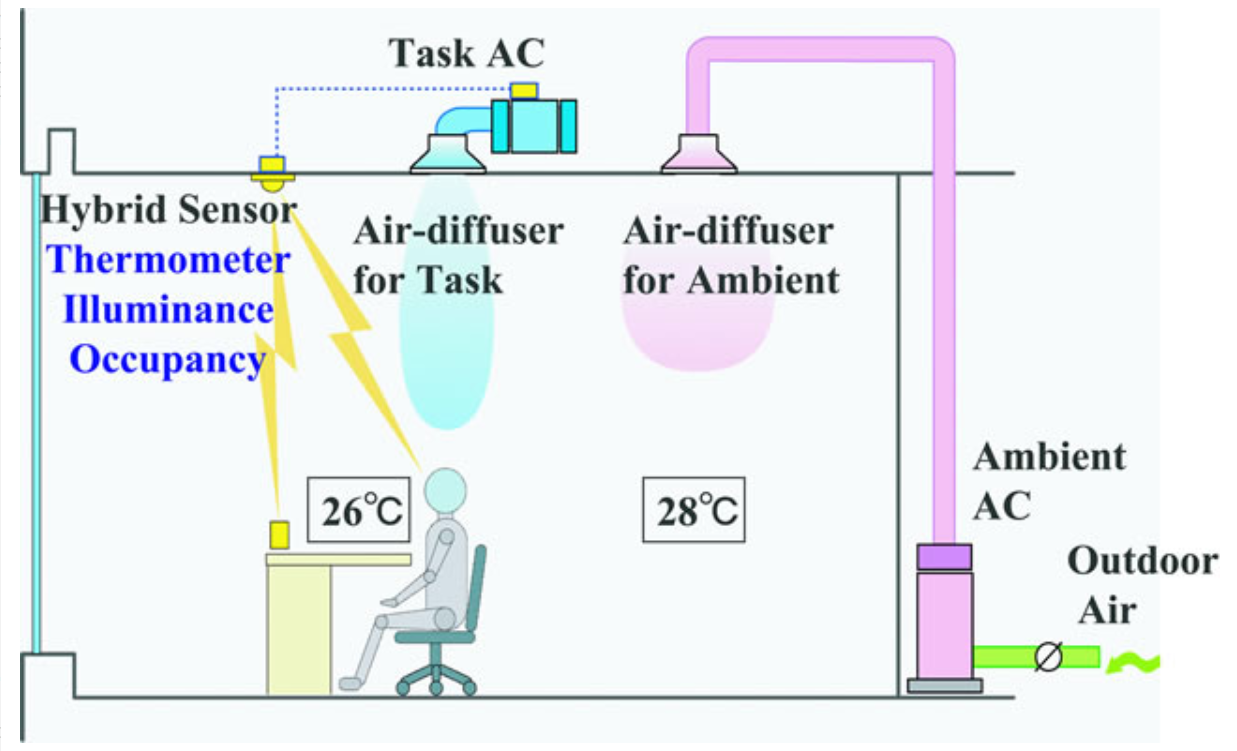
In different types of ventilation, each type has a special principle of work. To demonstrate its principle, it changes the airflow, and then a person’s perception of comfort will change, regardless of the central temperature. In task ambient temperature, the warm air flow is responsible for heating, and the cold air flow does the cooling. Consequently, the average temperature in hot places can be set higher than the comfort zone and save more energy in this way. People wishing more cooling increase the airflow while those who prefer to be warm reduce the airflow or divert it.
Download PDF for Types of Ventilation
The content of this article can be downloaded as a PDF document.
What Actions Should You Take When Designing a Ventilation System?
Listed below are four tips for designing ventilation systems.
- Select the location where your ventilation system will function. It would be best if you decided where your ventilation system would be located.
- Determine the types of ventilation design equipment you’ll need.
- Then, calculate the number of vents your room requires.
- Pay attention to the amount of make-up air flowing into the room.
Buy Equipment or Ask for a Service
By using Linquip RFQ Service, you can expect to receive quotations from various suppliers across multiple industries and regions.
Click Here to Request a Quotation From Suppliers and Service Providers
Read More on Linquip
- Heat Recovery Ventilation (HRV): Definition, Advantages & Installation
- Home Ventilation: Necessity, Types, and Strategies
- Natural Ventilation: Types , Advantages and Disadvantages
- Mechanical Ventilation System, Types, Advantages, and Disadvantages
- Energy Recovery Ventilator (ERV): Installation, Types & Advantages
- Ventilation Design: Spectacular Tips You Need to Know Before
- What is the Relation Between Ventilation and COVID-19?
- HRV vs ERV: Choosing Between Remarkable Types of Ventilation Systems
- Stack Ventilation: A Comprehensive Overview of The Principles and Applications

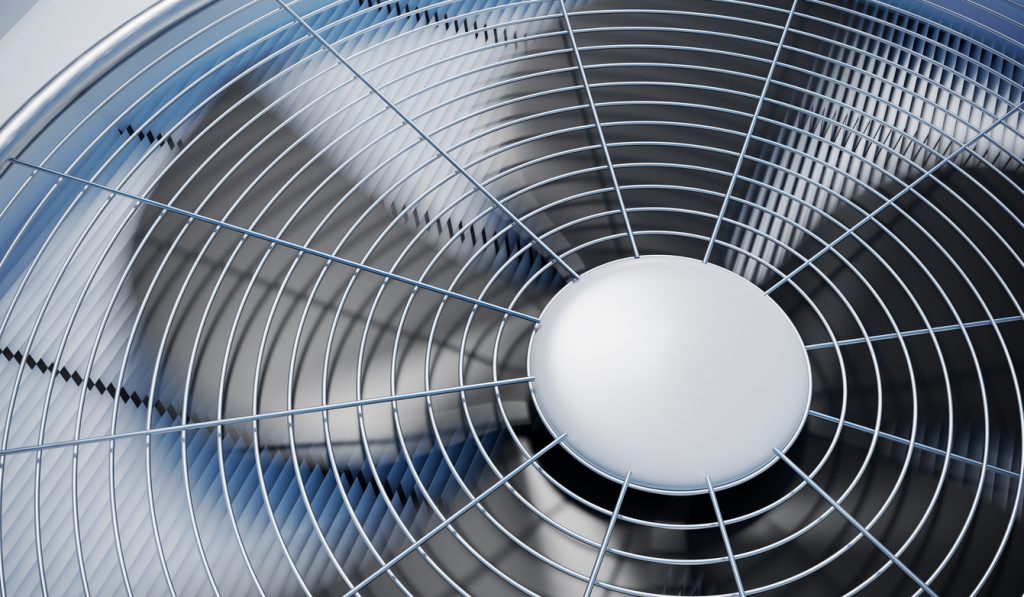


Thank you for this wonderful and amazing article! Very informative and helpful to everyone! Thanks a lot!
Thanks for visiting our website and leaving your comment! We hope to hear from you again in our other posts.
Very interesting article on types if air ventilator as it explains in detail what is their importance in industries, warehouses and commercial purposes. Keep up the great work. We are also trusted air ventilator manufacturers and suppliers in India.
Thanks Angel.